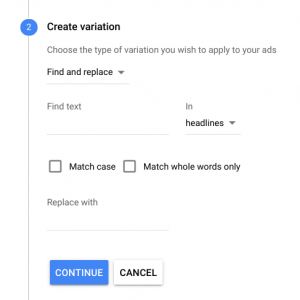By Steve Turley, Published November 6, 2014
Ready. Fire! Aim.
Overview: There’s an old story about Uncle Buster from the backwoods in Arkansas. Legend had it that Buster had a homemade bow he carved from a hickory stump, and Buster could shoot his hickory bow more accurately than an Olympic archer using a custom compound bow. As visitors drove up to Buster’s house, they would pass his big, wooden barn, which was literally covered with hundreds of painted targets. Dead center in each target was firmly planted an arrow, clear evidence of Buster’s incredible marksmanship.
One day, a visitor from up north got lost in the woods and stumbled upon Buster’s barn. He stopped his car on the one-lane dirt road (not like there was any traffic to worry about) and stood there, counting the bull’s eyes on the barn. About the time he had passed 300 targets, Buster pulled up in his rusty pickup truck. “Help ya?” Buster asked.
“I am amazed,” replied the visitor, “as the unbelievable marksmanship here. Do you know who did this?”
“Yup,” Buster responded. “I shot every one of them arrows with a bow I carved myself from a hickory stump over yonder.”
“Absolutely amazing! How did you learn to shoot so well?”
Buster grinned. “Simple, mister. I shot first, then painted on the targets.”
Unfortunately for marketers, Demand Generation isn’t quite so simple. But I often see it executed Uncle Buster’s way: Ready. Fire! Aim. This leads to Demand Generation Fail number 2: insufficient planning.
When it comes to Demand Generation, planning comes in two different flavors: infrastructure and execution. The chief issue with infrastructure is the “new toy” syndrome, in which the rush to stand up and turn on a new Marketing Automation Platform (MAP) is so great, the necessary forethought and planning required for proper design is ignored in lieu of getting emails out the door. Lack of execution planning generally results from the lack of process or the discipline to consistently follow established process due to internal or external deadline pressures.
First, let’s look at the results of failure to plan you infrastructure. If this were a medical practice, we’d be performing a diagnosis based on your symptoms.
Symptom 1: Reporting atrophy! You are constantly scrambling to piece together reports to indicate the success of your campaign tactics. This symptom presents as patched-together spreadsheets from your MAP, your CRM, and possible other Legacy systems. In extreme cases, you can’t even tell which assets were downloaded as a result of your campaign.
Symptom 2: List mania! You are constantly moving “lists” around manually. Today, you import an acquired list procured by Ted in sales. Tomorrow you export “leads” from an event vendor so you can import them into your MAP the day after tomorrow. In extreme cases, you are managing you lists of lists in another list.
Symptom 3: Leads, leads, everywhere a lead! Every contact in every system is a “lead.” Your conversations about leads with your CMO leave you bewildered. Sales is complaining about lead quality. Field marketing is complaining about lead quantity. EMEA had no idea leads were sitting in their lead queue. APAC isn’t in the habit of following up on leads. LatAm only generates its own leads. In extreme cases, it just occurred to somebody in sales ops that sales was only updating contact records because they don’t know what a lead is.
Symptom 4: An army of one! Your last defined segment produced a single contact in Yuma, Arizona. Your lead scoring map is predominantly D4s. In your last meeting with sales ops, they asked if you could just make everyone an MQL. In extreme cases, your lead scoring is completely turned off.
These results are symptomatic of an infrastructure built without regard to process or not planned to help you manage your processes. Proper process and definition are necessary parts of your infrastructure planning. Part of the planning is a clear and precise definition of your lead flow, Lead stages and process for actions in stage and triggers for both forward and backward movements.
Next, let’s look at the symptoms of execution planning failures.
Symptom 1: Recurring mistakes! Wrong recipients get wrong messages. Links take prospects to the wrong place, or no place (the dreaded 404 error!). Images don’t load. HTML doesn’t render correctly. Since deadlines are critical, we need to skip steps in the process, right? Like QA. In extreme cases, you are unaware the project management discipline exists.
Symptom 2: Low sender scores! Combine high bounceback rates, high opt-out rates and complaints and you get low sender scores. And few responses. Extreme cases result in opt-out rates higher then click-through rates.
Symptom 3: Persona non grata! You can’t point to a specific content map with a persona and buying stage. Your content strategy is “turn up the volume.” In extreme cases, you have no content strategy at all.
Symptom 4: California customs! Everything is a one-off. You have no template library, or nobody uses it. Your internal clients begin every proposal with, “It’s exactly like the Chicago campaign, except…” or “Upper management has their eyes on this…” In extreme cases, you haven’t seen a “standard” campaign in three years.
These execution symptoms are simply the result of insufficient planning, which generally stems from lack of operational process oversight and control. Lack of understanding between departments concerning the level of effort required in each step compounds through the design and development phases of a project until there is little bandwidth left for testing and deployment. The result is systemic execution failure, as exhibited in the symptoms above.
Please remember, you are not alone! Many organizations suffer from these same symptoms. It is not you, it is a disease called FTP, or failure to plan. There is hope, because you can begin to plan today. Ready, Fire, Aim never works.
Notes:
You cannot expect to execute flawlessly on a platform not designed around your process. Take the time to properly document your lead management process before attempting to automate it. You cannot automate an ambiguous process.
Make sure your data is clean, complete and standardized before uploading to an automation platform. Incomplete or incorrect data leads to incomplete and flawed execution.
Whether it is trying to execute too quickly or the repetitive nature of some processes, inattention to detail will kill your campaign every time!
Business Articles | Business 2 Community
(219)








